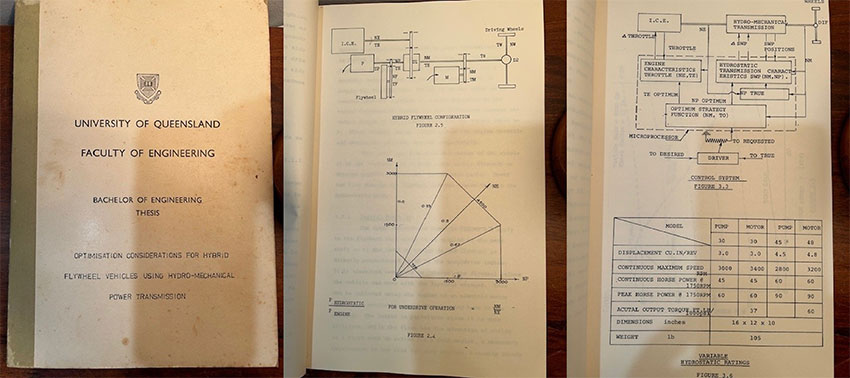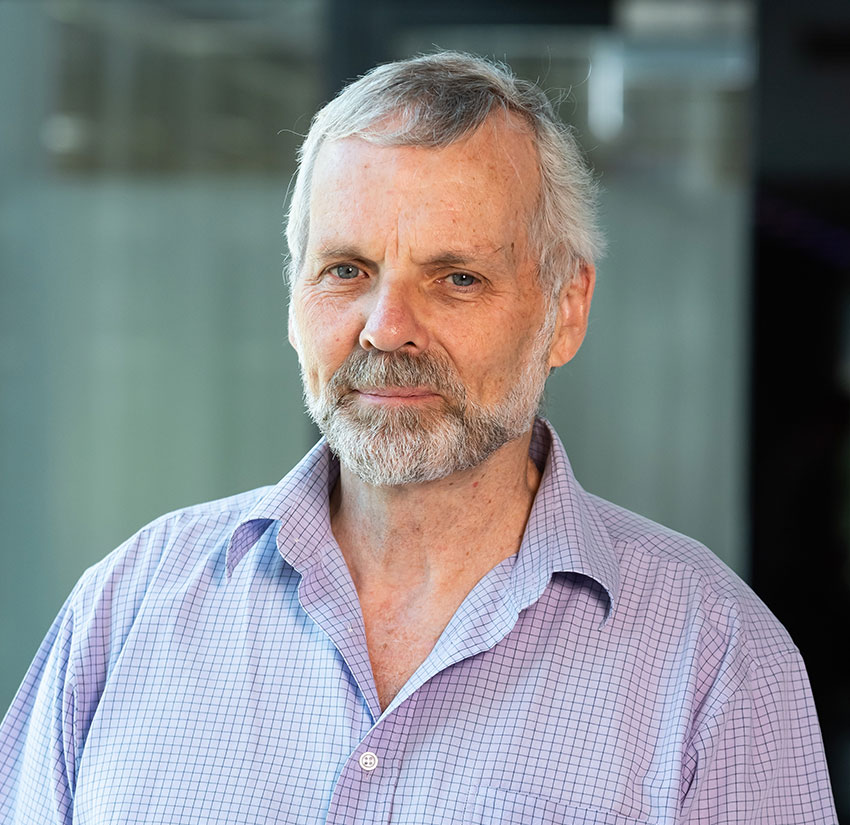Designing a hybrid car on a hybrid computer
When Barry Downes was completing his mechanical engineering degree at the University of Queensland in the mid-1970s, he wrote his thesis on a hybrid car.
“The university had one of the earliest analogue-digital hybrid computers, using punch cards for the program,” said Barry, who recently celebrated 40 years with CS Energy and 45 years in the industry.
“I created a computer model of a hybrid vehicle using flywheel energy storage and hydrostatic transmissions. ”

Barry’s thesis was about trying to optimise the control of the car.
“I basically had to model the whole thing - the characteristics of the engine, and the characteristics of the hydrostatic transmission,” he said.
“The engine was about the size of a Mini, with the performance of a six-cylinder Falcon, but with better fuel efficiency.
Gladstone, Stanwell, Tarong – and more
After graduating, Barry started his career with the Queensland Electricity Generating Board (QEGB) in 1977. He has worked at many of the power stations in Queensland, starting at Gladstone shortly after it had started operating.
“I moved to Gladstone for six months to get some power station experience, but ended up there for over four years,” he said. “That’s where I became a bit of a boiler specialist because most of the problems at Gladstone at the time were in the boiler area”.

“I coordinated and supervised all commissioning phases of 275MW boiler and turbine units and was part of a couple of boiler taskforces to test and analyse equipment.
“From there, I returned to Brisbane and put together the specifications for the Stanwell Power Station boiler before it went to tender. It was to be the third station with 350MW units in Queensland, burning Curragh coal.
“I also reviewed the detailed design submissions for Tarong Power Station’s boiler contract.”
In 1981, Barry took some time off to travel through South East Asia, India, Nepal and Europe. His work in energy continued while he travelled, with six months spent volunteering at the British Centre for Alternative Technology in Machynlleth, Wales, working on small-scale wind, hydro and solar, and energy conservation projects.
“It was up in the hills and off grid,” said Barry. “I’ve always been interested in alternative energy.”
He recommenced with the QEGB in 1984, working on the Tarong boiler design review before relocating to Tarong Power Station for a several years soon after it had started commissioning.
In 1991 Barry returned to Brisbane with his family.
“At the time, I was working for Austa Electric, which serviced all the power stations, and I worked on design reviews for Stanwell, Swanbank, Kwinana , and Mica Creek Power Stations.”
Working across boundaries
Barry’s career has been about interesting experiences rather than climbing a ladder.
“I’ve never been interested in doing any sort of management roles,” he said. “On the technical side, we tend to work as a matrix organisation where we work across boundaries in different groups as required in a lean organisation.
“And I get to do a lot of interesting work. After CS Energy was established in 1997 it went through a period of rapid growth and had some really interesting projects – we built Callide C and Swanbank E and Kogan, automated Callide A, and we helped automate Mica Creek and convert it from coal to gas,” Barry said.
“I think Swanbank was the most enjoyable part of my career. They had some quite radical concepts in that automation project. I worked out there for several years when Swanbank was still with CS Energy.
“I was able to just do modifications to the control system while on site and we had real continuous improvement turning those units into the best units in our portfolio, and there were interesting projects in terms of improving its flexibility. That was really rewarding.”
Change a constant over 45 years
Having worked in the industry since 1977, Barry has seen considerable change – even to the Personal Protective Equipment (PPE).
“We used to wear shorts and long socks,” Barry said. “We had work boots, a helmet, and some ear muffs – that was about it for PPE.
_QEGB_turbine-inspection-at-Gladstone-Power-Station_1977-1981---archival-pic_850w.jpg)
“Everything was paper based, we didn’t have computers. I think I was at Swanbank for a few years before I got a computer.
“Of course, there’s massive change going on now with the energy transition, trying to get off fossil fuels,” he said.
“The renewable transition is going to happen, that's for sure. I think we’ll definitely need offshore wind, and community batteries. Rooftop solar is going to be a big part of it; it makes a lot of sense to me because that takes the load off the grid.
“With renewables, you have to move the energy around a lot more based on where it’s being generated and where it’s being used, so you’ll see a lot more flow between the states.
“So, to support that energy being moved around the transmission system, that’s where the grid batteries come into their own - they can remove a lot of the stability constraints.
“Batteries at load centres will also take the load off the grid in peak times.”
As for hybrid cars… Barry’s been driving a Prius for some time now.
“I’m on to my second one, and I’ve had it for several years now,” he said.